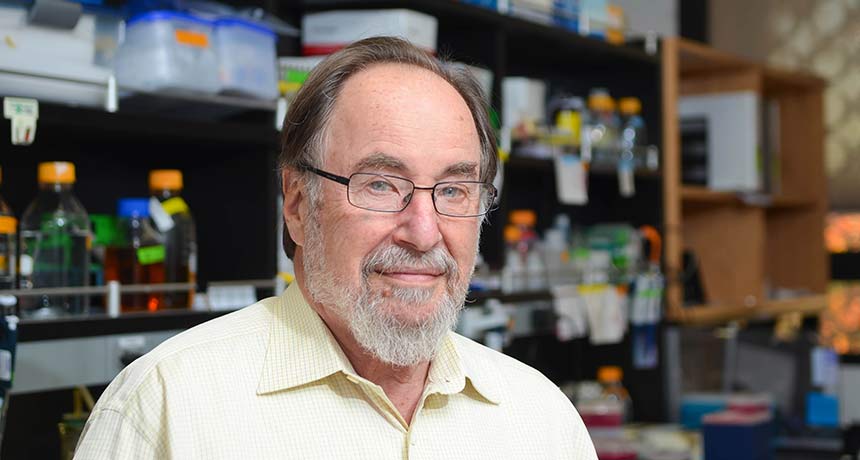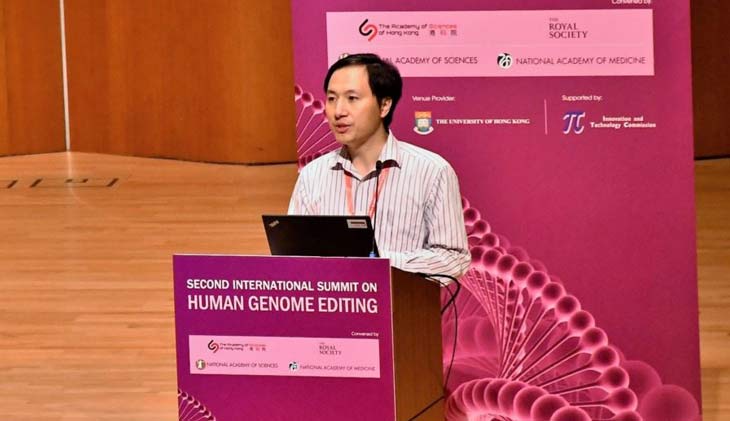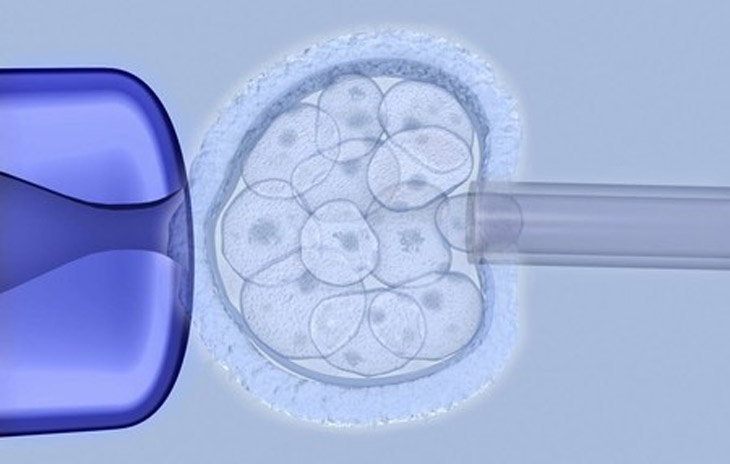
NO BAN Nobel laureate David Baltimore is a proponent of doing research to make human gene editing safer, but says the technique isn’t ready for producing genetically modified babies. He talked with Science News about how gene editing should be regulated.
Caltech
Scientists are vigorously debating how, and if, they can put the human gene-editing genie back in the bottle.
There is widespread agreement that it’s currently “irresponsible” to make heritable changes in human cells. Gene editors, even the much lauded CRISPR/Cas9 molecular scissors, have not yet been proven safe and effective enough to use to alter genes in the human germline; embryos, eggs, sperm or the cells that give rise to eggs and sperm. But that didn’t stop Chinese scientist Jiankui He from announcing in 2018 the births of two gene-edited babies.
Now in the wake of almost universal outrage over He’s actions, efforts are under way to prevent others from doing the same thing.
Some scientists have recently proposed a temporary moratorium on editing that would result in babies that carry heritable changes. Such a ban would last for perhaps five years to buy enough time to improve the technology and to allow for public debate (SN Online: 3/13/19) .
An advisory committee to the World Health Organization has alternatively proposed a global registry of work on human gene editing. Such a database would provide transparency and a better understanding of the state of gene-editing science, committee representatives said in a news conference March 19.
Science News talked with Nobel laureate David Baltimore, who is president emeritus of Caltech, about the ongoing debate. Baltimore, a virologist and immunologist, chaired two international summits on human gene editing. The interview has been edited for brevity and clarity.
SN: You’ve come out in the past as not being in favor of a moratorium. Why?
Baltimore: It’s largely a semantic issue. Statements made after the first summit and the second summit have avoided using the term moratorium. Consciously. Because that word has been associated with very firm rules about what you can do and what you can’t do.
I fully agree — and the whole group of us involved in the summits agree — that we’re not ready to be doing germline modification of humans, if we ever are. You might say, “Well, that’s a moratorium,” and, in a sense, it is. I don’t have a big argument about that.
But the important point is to be flexible going forward. That’s what’s wrong with a moratorium. It’s that the idea gets fixed in people’s minds that we’re making firm statements about what we don’t want to do and for how long we don’t want to do it.
With a science that’s moving forward as rapidly as this science is, you want to be able to adapt to new discoveries, new opportunities and new understandings. To make rules is probably not a good idea.
What’s a good idea is to be on top of a changing environment and to adjust to it as time goes by. And that’s both an ethical environment and a practical environment of the mechanics of gene editing.
SN: Would a global registry of all gene-editing experiments help?
Baltimore: A gene-editing event in which a human being’s genes have been modified, or in which a child’s genes have been modified, is something that will be passed on through the rest of time. It is now part of the heredity of the human species. If we don’t know it’s happened, we don’t know that [edited] gene is there, so we can’t identify the effect of having that [altered] gene.
So I think it is important that there be a registry of all gene-editing events, so that we can follow, over time, the consequences of those modified genes.… It is important [to] follow these children as they get older. You just want to make sure there is not some sort of untoward medical aspect to it, and second of all, to know what genes have been modified.
A registry would be very important for germline modifications. For somatic modifications [non-heritable edits in DNA of children’s and adults’ body cells], it’s not important, any more than for any other medical procedure, because it really isn’t any different from any other medical procedure.
SN: Are there similar registries for other types of research?
Baltimore: There is a global registry of clinical trials. I don’t know of another global registry that focuses on a particular therapeutic activity. On the other hand, there is nothing quite similar to gene editing that has ever been done before, so it would be reasonable to create it.

SN: Can rogue activity, such as He’s creation of gene-edited babies, be prevented?
Baltimore: We want to create an environment where it’s very clear that we shouldn’t be moving ahead right now. [But] we can’t absolutely prevent that. You can’t prevent murder by having a law against murder. It still happens. Laws aren’t ways of preventing something; they are ways of indicating society’s opinion, and to take a person who has done it out of circulation if they’re a danger, but you don’t prevent the actual event from happening.
SN: What is the potential impact of individual governments or an international treaty restricting gene editing?
Baltimore: It could hold back the science. Right now there are many countries that have outlawed [germline editing] and the way they have phrased it prevents certain kinds of experimental work from being done. That is unfortunate, because I think we want to move forward with experimentation.
In the United States, you can’t do anything that modifies an embryo [paid for] with federal funds. But you can with private funds, so we are moving forward in the United States, using nonfederal money.
[In the moratorium proposal], they talk about individual countries making their own decisions, and I think that’s how it has to happen. It’s very hard to imagine a treaty with all of them and all the complications surrounding this issue. It would take so long, it would be out-of-date before it was passed.
I don’t see how we could prevent a country from saying it’s their position that germline editing should be allowed. There would be a lot of debate about that and such a country would find itself in the position of being an international outlier, and [might] not want to be that, so there would be a lot of pressure to conform. But we just don’t have the mechanism for international law beyond treaties.
SN: Do you envision a day when gene editing will be safe and effective enough to use for germline modifications?
Baltimore: I do.
SN: When?
Baltimore: You never know, because it depends on new technological innovations. They could happen tomorrow or they could not happen for years. It probably isn’t a matter of more than a few years.
SN: Has there been enough public education and debate that society will be ready for germline modification?
Baltimore: There are couples today who would like to have a child that inherits their genes, but among their genes, there is one [mutated gene] they would not like their offspring to inherit. If we could guarantee that the offspring would not inherit a mutated gene, they would then be able to have the child they want to have. They would be able to say to a physician, “Is there a procedure that could safely give us the child we want?” I think when the answer to that question is “yes,” there will be tremendous pressure on the medical community to carry out gene modification.
At that point, we’ll have to balance the desires of couples to have children without mutated genes with the fact that this is a new kind of procedure that we don’t have a lot of experience with, and that some people may think is inappropriate. In general, people are responsive to the desires and needs of these couples. I think they will say this is something we should do.

SN: Some people argue that it’s already possible to have a baby without a genetic disease through preimplantation genetic screening. So would germline gene editing be restricted to very specific cases?
Baltimore: It depends on what’s safest and most effective. If embryo selection can give us a very high percentage elimination of the gene, then we can do it by embryo selection. Today, the probability of getting a good implanted embryo that comes to term is about 25 percent. So 75 percent of couples that have a procedure don’t get an offspring, so it’s not very effective. Some people say, “Why don’t you just concentrate on making it more effective?” That would be a good thing, but we don’t know that you can. It really comes down to what works and what solves the problem.
SN: Are there any issues that need to be talked about more?
Baltimore: I think the biggest impediment to actually using the technology is the danger of mosaicism: embryos in which some cells are modified and some cells are not, and we don’t know which is which. We have not yet solved that problem.
There was a paper a year or more ago in Nature that claimed to have minimized mosaicism, but many people are doubtful that that paper is exactly right (SN Online: 8/8/18). So until we get that ambiguity solved, I don’t see how we can go forward. There are ways on the drawing boards to solve that problem, but they’re not in actual practice.
SN: Are there any other pitfalls we should be aware of?
Baltimore: There’s nothing like actually moving ahead [with research] to teach us what the actual pitfalls are.






